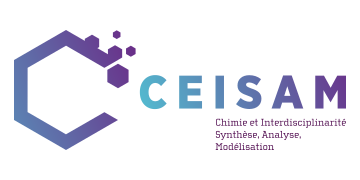
CRAC - Using highly reductive and colored photo-activated homoleptic copper(I) complexes in organic chemistry
The CRAC project led by Yann Pellegrin involves using the photochemical process of reductive quenching of the excited state with homoleptic copper(I) complexes. In this way, impressive reducing powers are achieved under the action of light, enabling the activation of organic substrates with low reactivity, notably aryl chlorides. Our aim is to exploit this process to promote photochemical cross-coupling reactions, and photogenerate C-C, C-B or C-P bonds.
Project summary
CRAC aims to achieve efficient photochemical reactions on difficult-to-activate substrates using photosensitizers (PS) based on Cu(I) CuL2 complexes (where L is a phenanthroline ligand). To this end, we will implement for the first time a photochemical reductive quenching cycle with CuL2: this consists in the reduction of excited (CuL2)* by an electron donor D, leading notably to the formation of a reduced CuL2- complex. The latter is a powerful reductant capable of reducing a wide range of substrates: these inexpensive, harmless complexes are essential for replacing expensive, toxic heavy-metal PS in organic photochemistry. CuL2 and D work in tandem for ambitious photochemical reactions. The {CuL2/D} couples will be used under irradiation to drive coupling reactions (C-C, C-P...) with particular ambition for organoborane chemistry (C-B bonds). The low cost of CuL2, its strong absorption in the visible range and the high reducing power of CuL2- will make photochemical reactions cheaper and more efficient than with the PS used to date, enabling large-scale applications (relevant industrial substrates and flow photochemistry).
